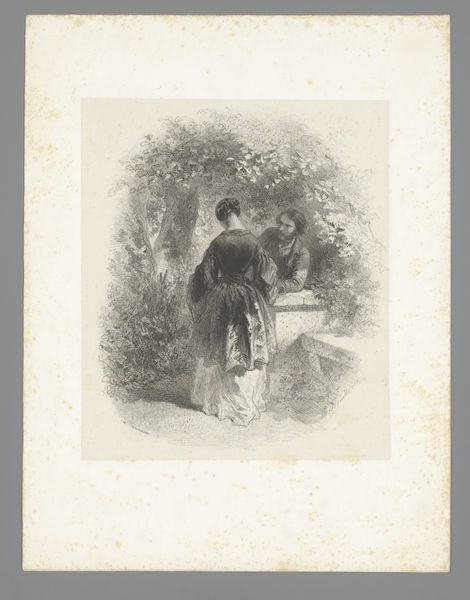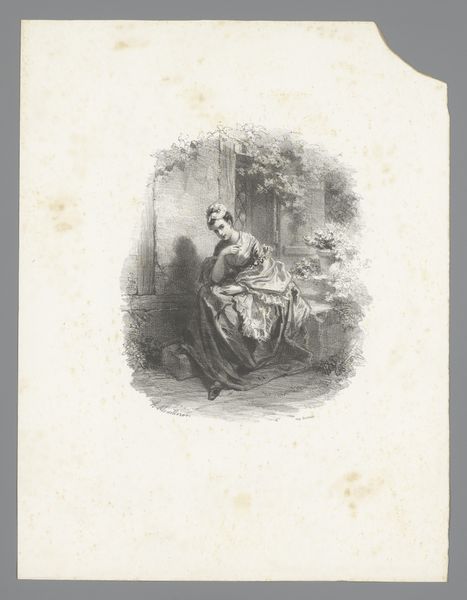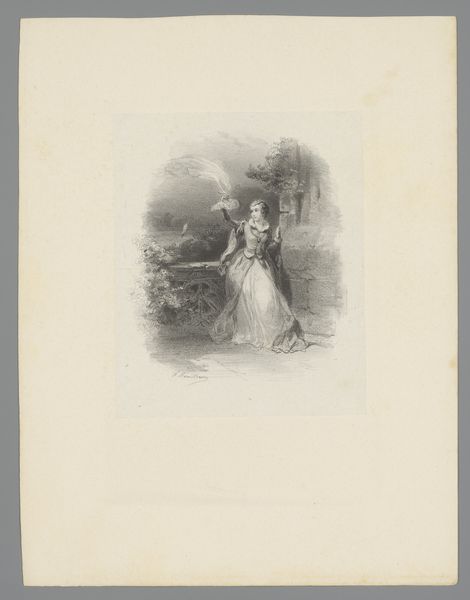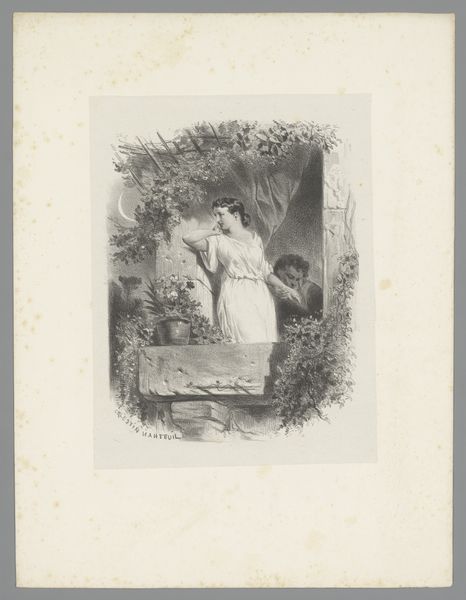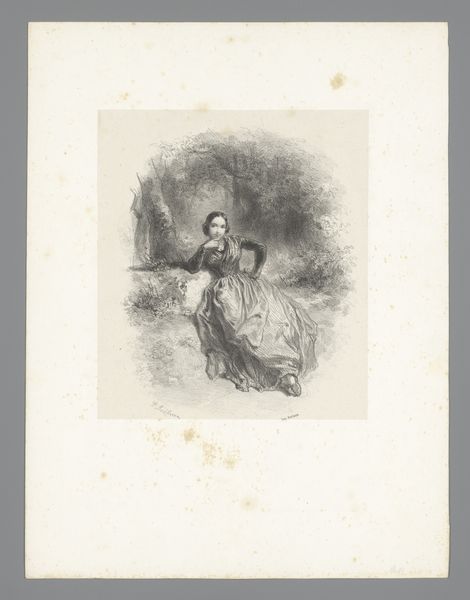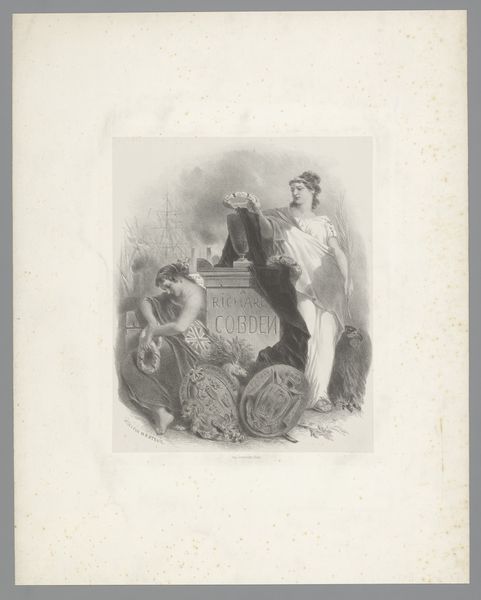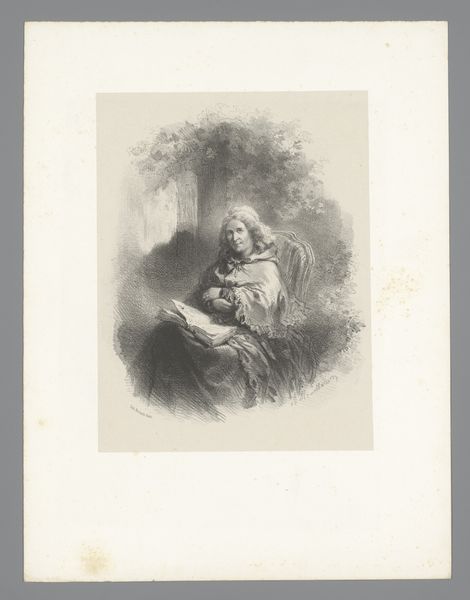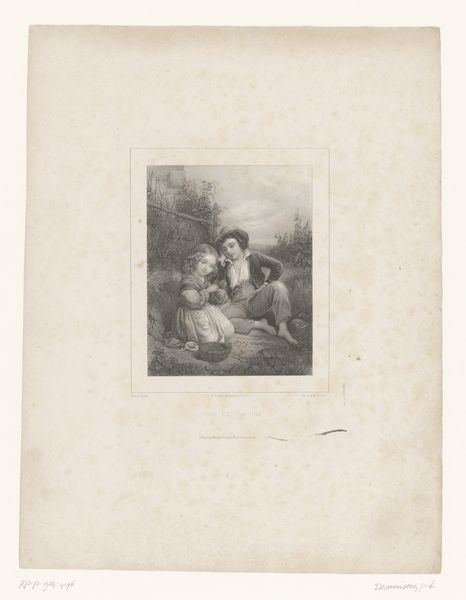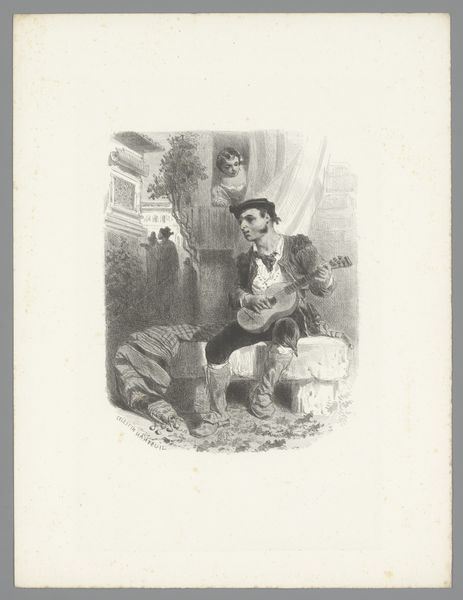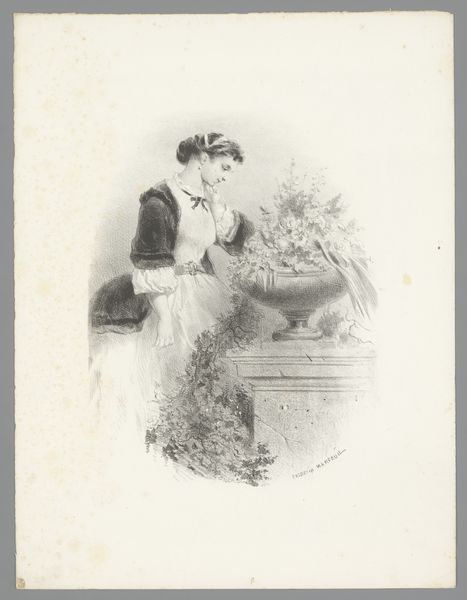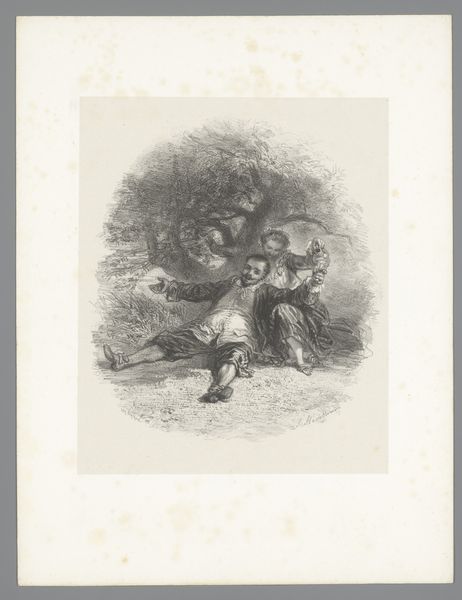
Dimensions: height 359 mm, width 274 mm
Copyright: Rijks Museum: Open Domain
Curator: Before us we have a drawing attributed to Adolphe Mouilleron, dating from approximately 1830 to 1880, titled “Young Woman at a Flower Stall.” It resides here at the Rijksmuseum. Editor: My first impression is one of subtle, delicate beauty. The drawing appears quite soft, almost ethereal, like a memory captured on paper. The density of marks shapes the atmosphere and focus in interesting ways. Curator: Indeed. Observe the meticulous line work—Mouilleron skillfully employs pencil on paper to construct not just the figure of the woman, but also the elaborate setting of the flower stall itself. We might explore the tradition of Romanticism embedded within. Notice its embrace of delicate yet fleeting beauty within ordinary scenes and themes of cityscape and genre painting. Editor: The contrast between the seemingly delicate lines and the visible labor needed to create the scene raises fascinating questions. This is not a polished painting meant to create illusion. What about the artist’s process and access to his raw materials in urban centers? Consider the materials involved: the quality of the paper, the specific type of pencil, how these contribute to the overall texture. It speaks to a very specific context for making. Curator: The contrast is part of its effect, I agree. But this also draws the viewer into an interpretation of formal aspects within Mouilleron's careful arrangement, as though carefully staged to guide our viewing experience. The umbrella canopy echoes the lines within the drawing itself; each element repeats as part of a delicate aesthetic scheme that rewards scrutiny. Editor: Perhaps, yet the flower stall, too, might embody a transient workspace reflective of industrial growth in the late 19th century. Urban environments transformed, which could speak about gendered work. The drawing as a document embodies more than beauty alone, but speaks more about its mode of construction as work. Curator: A very astute observation. Looking at it again through that lens, I must say it enriches my understanding. Editor: I’ve certainly appreciated examining Mouilleron’s drawing with a more structured analytical viewpoint; thanks to its meticulous line work we can appreciate how art also preserves records about materiality.
Comments
No comments
Be the first to comment and join the conversation on the ultimate creative platform.
